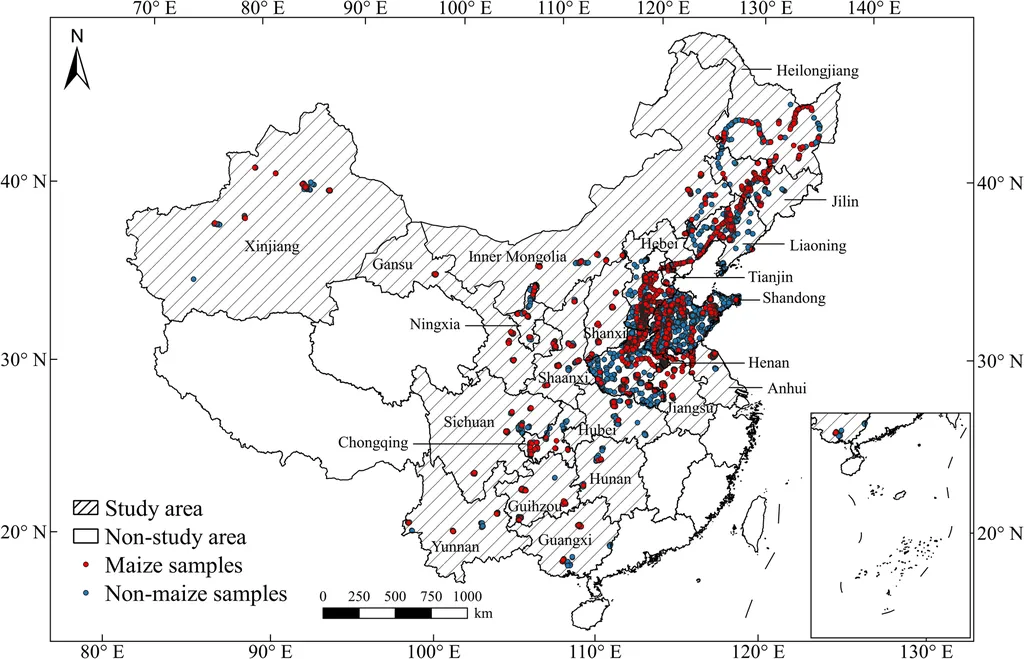In the vast, fertile expanse of China’s Sanjiang Plain, a groundbreaking study is revolutionizing the way we monitor and manage maize growth, with significant implications for the agricultural sector and beyond. Led by Huichun Ye from the International Research Center of Big Data for Sustainable Development Goals in Beijing, this research leverages advanced remote sensing techniques to extract and analyze key growth stages of maize, offering unprecedented insights into the crop’s development and its response to meteorological variables.
The Sanjiang Plain, a critical grain production hub in Northeast China, serves as the backdrop for this innovative study. By harnessing MODIS NDVI time series data and employing Savitzky Golay and Whittaker filtering techniques, Ye and his team have developed a robust method for remotely sensing the key growth stages of maize: the jointing stage, tasseling stage, and maturity stage. This breakthrough enables large-scale, real-time monitoring of maize growth, a crucial factor for regional crop assessment, yield estimation, and farmland management.
The study’s findings are nothing short of transformative. The Whittaker filter, in particular, demonstrates remarkable accuracy, with errors under 8 days. This precision is vital for farmers and agronomists seeking to optimize crop management practices. “Our research provides a reliable tool for monitoring maize growth stages, which can significantly enhance decision-making processes in agriculture,” says Ye.
The spatio-temporal analysis reveals that from 2003 to 2022, the jointing and tasseling stages of maize have advanced by 0.43 and 0.19 days per year, respectively, while the maturity stage has been delayed by 0.38 days per year. These shifts indicate an extended growing season, closely correlated with rising surface temperatures and increased precipitation in the preceding month. “Understanding these trends is essential for adapting to climate change and ensuring food security,” Ye explains.
The implications of this research extend far beyond the fields of the Sanjiang Plain. In the energy sector, for instance, accurate crop monitoring can inform bioenergy production strategies, ensuring a steady supply of feedstock for biofuels. Moreover, the insights gained from this study can guide the development of climate-resilient crop varieties and sustainable agricultural practices, contributing to a more secure and efficient food system.
Published in the prestigious journal ‘Frontiers in Plant Science’ (translated as “植物科学前沿” in Chinese), this research marks a significant step forward in agricultural remote sensing. As we face the challenges of a changing climate and a growing global population, the ability to monitor and manage crop growth with precision becomes ever more critical. Ye’s work not only advances our scientific understanding but also paves the way for innovative solutions in agriculture and beyond.
In the words of Ye, “This research is a testament to the power of remote sensing and big data in transforming agriculture. It offers a blueprint for future developments in crop monitoring and management, ultimately contributing to a more sustainable and food-secure world.” As we look to the future, the insights and tools provided by this study will undoubtedly play a pivotal role in shaping the next generation of agricultural practices.

